Management of fractures in the pediatric patient
1. Introduction
Maxillofacial fracture repair in the pediatric patient presents a unique and challenging problem. A thorough understanding of the pediatric anatomy and dental eruption dates is vital.
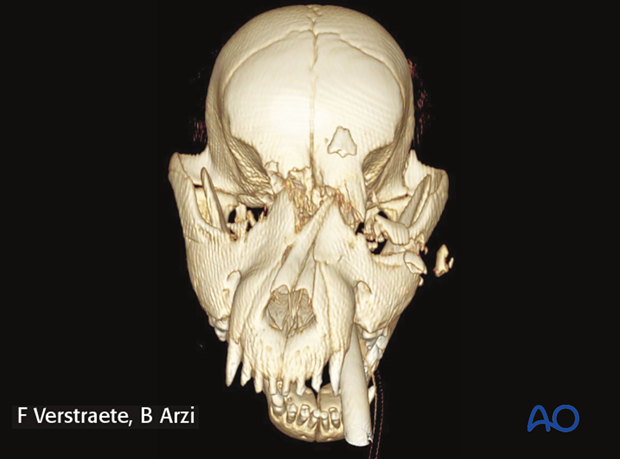
Depending on age, the patient may only have deciduous dentition or a mixture of deciduous and partially erupted permanent dentition.

The pediatric jaw has no space for safely place intraosseous or other internal fixation methods (i.e., plates and screws) as it is almost entirely occupied by deciduous and developing dentition. Due to the endomembranous ossification type of bone growth and regeneration, minimal disturbance of the periosteum is vital for healing and appropriate rate of growth. Rigid invasive fixation should be avoided in skeletally immature patients.
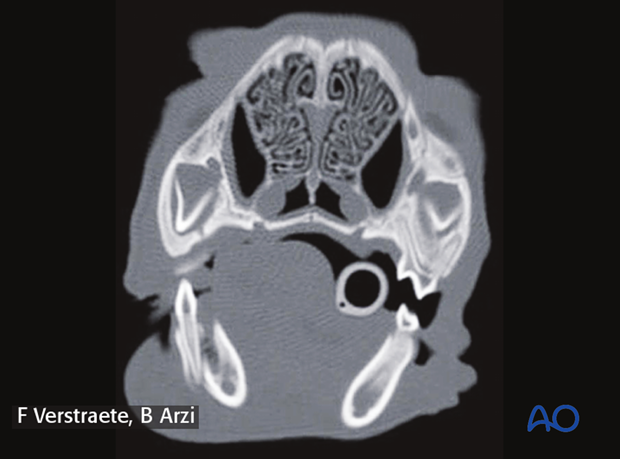
2. Nutritional requirements
Growing puppies have very specific nutritional requirements for normal development. They must receive their daily requirements. The vast majority of puppies will go back to eating shortly after maxillofacial stabilizations; if this is not the case an esophageal feeding tube is indicated.
3. Treatment principles
- Restoration of normal occlusion, if present, is the key to mandibular fracture repair.
- Pharyngotomy intubation intraoperatively provides the ideal method for occlusal assessment if rigid stabilization is used. This may not be possible in the smaller patients or in patients with pharyngeal swelling. Several extubations and reintubations may be used instead.
- Soft tissue debridement is important but should be kept to a minimum to prevent periosteal stripping and denuding blood supply to the bone.
- Placement of intraosseous implants is contraindicated due to the likely damage to the developing dentition and its interference with jaw growth at the site of the fracture.
4. Treatment options
Conservative
Fractures that are minimally displaced and stable require soft tissue debridement and suture repair.
Postoperatively, the patient should be kept on soft food until the fracture is healed and the activity restricted.
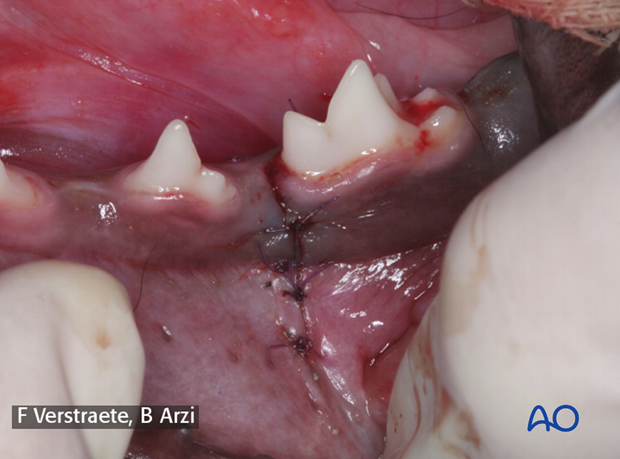
Muzzle or ‘ski mask’
Placement of a tape or nylon muzzle helps hold the jaw in appropriate occlusion. It is useful for mandibular and temporomandibular (TMJ) fractures.
Placement of a ‘ski mask’ is used in maxillary fracture cases. It provides even pressure and stability to the entire face.
These external coaptation methods are applicable in the vast majority of cases as they provide adequate stabilization and are well tolerated by the patients. Its use on brachycephalic breeds may be limited due to their short maxilla that does not support the muzzle well.
For additional information please see “Ski mask” nonsurgical treatment of simple fractures in the caudal midface section.
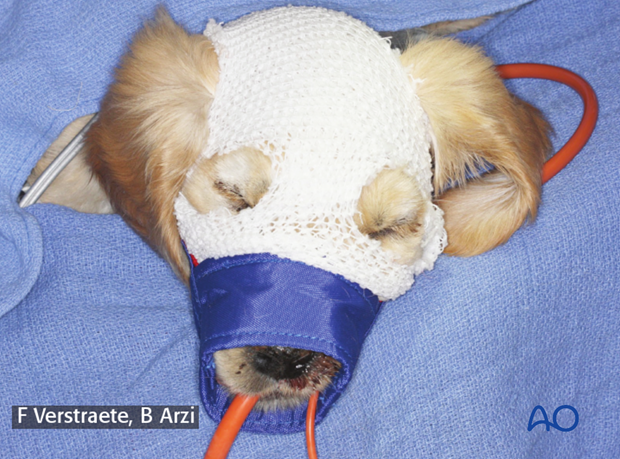
Interdental splinting
A non-exothermic composite splinting material is applied to the teeth on either side of the fracture line to form a stabilizing bridge. This method is used if there are at least two substantial and periodontally stable teeth on either side of the fracture line. That may be difficult if deciduous dentition is about to be exfoliated.
Interdental splinting can be used in combination with interdental wiring.
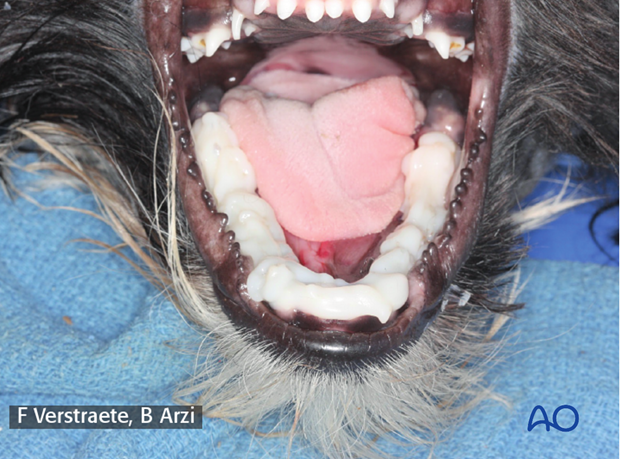
5. Follow-up
Regular re-examination is imperative. Young animals heal very quickly (four to six weeks), but the clinical picture may change drastically during this period due to continuous growth of the jaw and changes in odontogenesis. Weekly examination is recommended, with intraoral radiography every two to three weeks.












